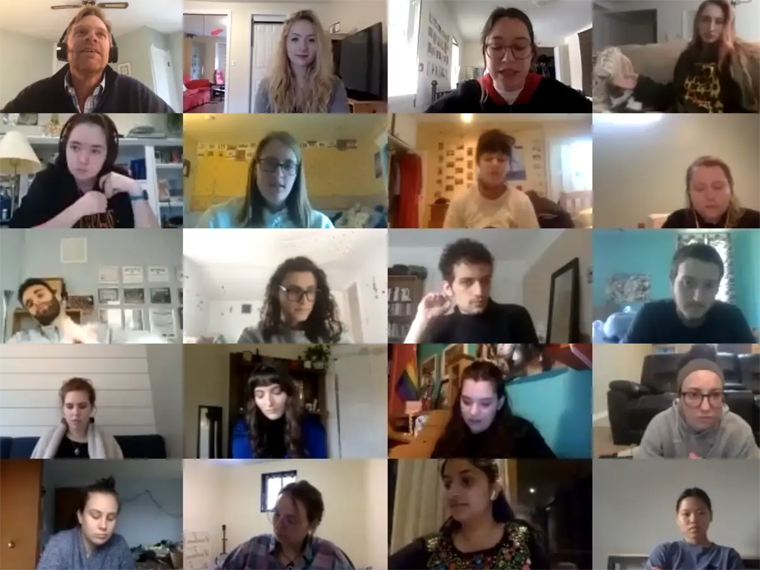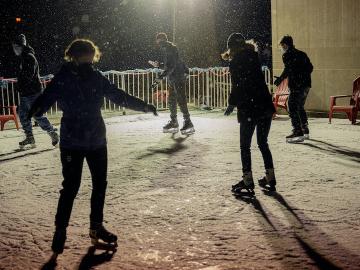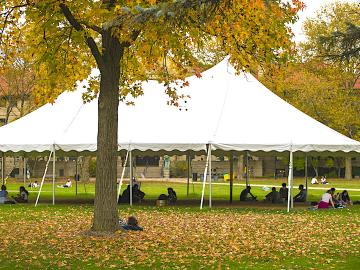Campus News
Teaching in the New Normal: Professor Drew Wilburn
April 14, 2020
Communications Staff

These days, the classroom has taken on new meaning for both faculty and students at Oberlin. We’re gathering stories of how faculty are navigating this new normal in this series. How have you adapted instruction to a remote learning environment? How have students shifted how they learn and participate? What’s changed, what’s stayed the same, or what has come as a pleasant surprise? Please share an example or anecdote that addresses one of these areas.
Professor of Classics Drew Wilburn explains how an activity in his course, Magic and Mystery in the Ancient World, took on new meaning for students during this time of transition. Read about his experience, below, and watch the video discussion.
“In the days leading up to the closure of the campus in early March, there were signs of what was coming. On Tuesday, March 10, I decided that I should give each of the students in my Magic and Mystery in the Ancient World class an amulet. These had been intended for a class in early May, but I was not sure how many meetings we had left.
“Amulets were (and are) important tokens—bits of string, stones with a natural hole, engraved gems, or strips of precious metal, to name a few—that individuals believe hold special power to protect, heal, or bring good luck. Amulets were ubiquitous in the ancient world, as the recent find from Pompeii attests, and I wanted my students to get a sense of what it was like to possess such an object.
“I gave each student a Nazar—a circular Turkish glass amulet with concentric rings of blue, white, light blue, and black, intended to protect the bearer against the evil eye. I purchased the amulets for less than a dollar each. In many modern and ancient cultures, the gaze of someone who possessed the evil eye, which expressed envy, was believed to bring misfortune. I did not think my students would believe that the amulets would actually work, but I wanted to see how they would feel about the objects after they had carried the talismans around with them. I asked them to keep the amulets with them at all times for a week. We had one more class, on Thursday, and then the campus closed.
“On the first day back to class after our two-week Spring Break, I talked to the class about how they were feeling and adjusting to life in isolation, and then we turned to their amulet experiences. Little did I know that the small, inexpensive amulets which I had imagined would move from dorm to the gym or the Feve, would now be scattered around the world—from California to the UK and India—and that they might take on new meaning in the midst of the Covid-19 pandemic. The amulets now serve as tokens of the shared Oberlin learning community that we created in the class and as a thread that links our acute experience of an unknown and poorly-understood biological threat to the lives of the ancients.”

Andrew (Drew) Wilburn
- Professor of Classics
- Chair of Archaeological Studies
Tags:
You may also like…
Who is Candice Raynor?
April 12, 2021
You may know that Candice Raynor is a member of the Africana Studies Department, but did you know that her nickname pays tribute to her great grandmother’s wish? Find out how in this installment of Who Am I?
This Week in Photos: Spring Semester Begins
February 12, 2021
Outdoor activities, live-streamed concerts, and socially distanced classes are underway for the spring semester.
This Week in Photos: Campus Life on a Fall Day
October 28, 2020
There’s something magical in the air at Oberlin College on a fall day. The trees are filled with yellows, reds, and golds, and the crunch beneath your feet sounds like potato chips.


